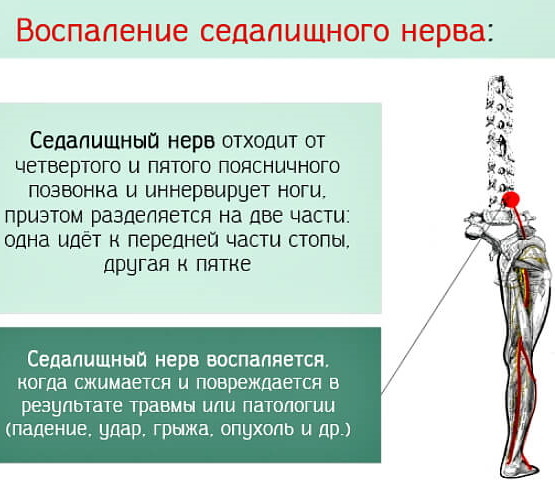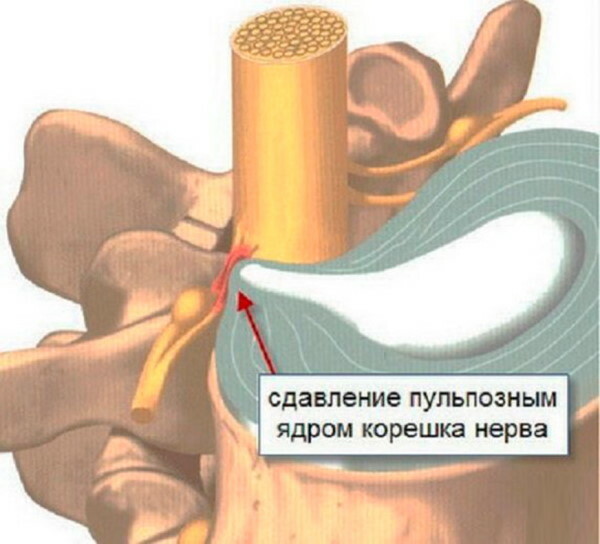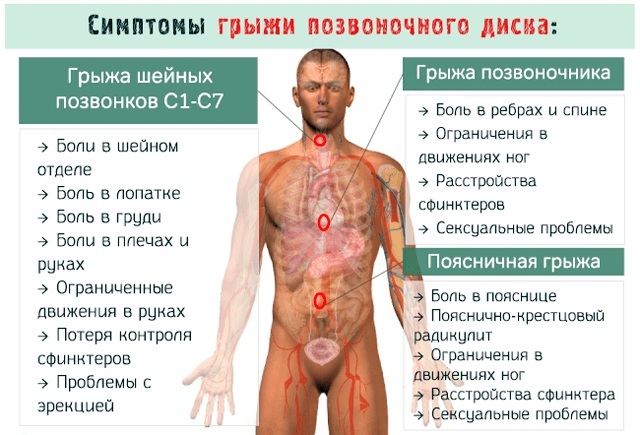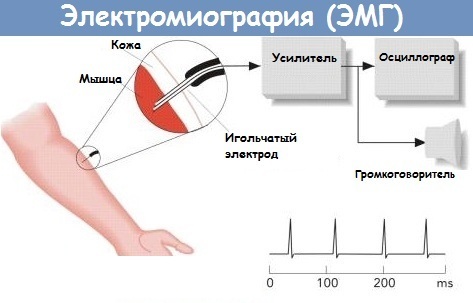Content
- Leg grows numb below the knee
- Calf numbness
- Thigh numbness
- Front, back, outer, inner thigh
- Numbness from hip to foot
- Why does the symptom appear on only one leg?
- Leg grows numb when walking
- What to do?
- Is treatment required?
- Numb foot video
In case of damage to peripheral nerves, spinal cord, arteries the right or left leg grows numb. These conditions are called paresthesias. A subjective sensation, as if the lower limb had been served, is characteristic of women with vegetative-vascular dystonia, psychoemotional lability.
Leg grows numb below the knee
Etiological factors are pathological or physiological. The latter include hypodynamia - a lack of physical activity, which leads to a violation of the blood supply to the area below the knee of one or both limbs. Large main arteries pass here.
The leg grows numb, as if it has served time, due to excessive compression load on the nerve roots with excess weight, varicose veins. Paresthesia is accompanied by an indication, a slight burning sensation or a feeling of creeping "goose bumps" in the part of the body innervated by the affected peripheral nerve fibers.
Cooling of the skin in the affected area clearly signals impaired blood circulation. The category of physiological causes of numbness includes fatigue of the legs due to prolonged standing, prolonged walking against the background of insufficient athletic readiness.
Paresthesia of this etiology is complemented by:
- discomfort or pain in the limbs;
- swelling of soft tissues below the knee;
- muscle tension;
- severity;
- bursting.
Periodic numbness of the lower extremities by the end of the working day is a professional violation of hairdressers, salespeople and waiters. Such paresthesia is of a short-term nature and disappears after rest.
Of the pathological causes of numbness of the legs below the knee, there are:
- Diabetic, toxic or alcoholic polyneuropathy. The heterogeneous complex of symptoms is characterized by systemic damage to the nerve fibers of the peripheral region.
- Obliterating endarteritis. The clinical picture of progressive lesions of peripheral nerves is complemented by stenosis of the arterial beds with the development of an ischemic state of the lower extremities.
- Vasculitis. The autoimmune process is associated with inflammation of the vascular walls, which impairs sensitivity in the affected area.
- Consequences of traumatic injury or surgery.
The symptom is temporary or permanent. Depending on the etiological factor, paresthesia is combined with decreased muscle tone, convulsive readiness, and spasmodic manifestations.
Calf numbness
A common cause of decreased tactile sensitivity in this part of the lower limb is a deficiency of sodium, magnesium, or cholecalciferol (vitamin D3). The first one ensures the conduction of nerve impulses, participates in the process of bone tissue formation, and has intracellular regulatory influences.
One of the symptoms of sodium deficiency is paresthesia, covering the calves with adjacent anatomical structures of the lower limb. The trace element improves the transport of glucose to nerve and muscle cells. Sodium-dependent character is amino acid conduction through the membrane envelope.
Desensitization of one or both legs in the calf area is often caused by magnesium deficiency. The natural mineral is considered a natural tranquilizer and anti-stress component.
Magnesium is involved in:
- energy synthesis;
- splitting and assimilation of polysaccharides coming from food;
- transmission of peripheral nerve impulses;
- regulation of vascular tone;
- control of muscle contractions;
- inhibition of excessive psychoemotional arousal in the cerebral cortex.

Not the least role in the development of paresthesia is played by the lack of cholecalciferol. Hydroxylated metabolites of the vitamin substance regulate phosphorus-calcium metabolism, improve the permeability of cellular and mitochondrial membranes.
The leg grows numb, as if it has served time, in the calf area when the concentration of potassium in the blood drops to a critical minimum. The trace element is responsible for the functioning of nerve receptors and the transmission of electrochemical signals through them.
The lack of potassium makes it impossible for sensitive peripheral fibers to fulfill their own biological purpose. A decrease in tactile perception by the skin of the calves occurs due to hemodynamic disturbances in the muscles of the lower extremities.
Thigh numbness
A common cause of paresthesia in this part of the body is damage or inflammation of the sciatic nerve. Compression of sensitive fibers and roots often occurs in the area adjacent to the lower spine, at the level of the lumbosacral or gluteal region.
Other pathological causes of hip paresthesia are presented in the table.
| Etiological factor of numbness | Pathogenesis and clinic |
| Sciatica | A pathological condition of a non-inflammatory nature develops due to degenerative-dystrophic processes in muscle and nerve fibers. Sciatica is manifested by burning pains, impaired reflexes, disorder of tactile sensitivity.
|
| Piriformis syndrome | The tunnel variant of neuropathy is characterized by compression of the sciatic nerve by inflamed muscle tissues. The main clinical manifestation is severe sciatica, supplemented by a decrease in tactile sensitivity. |
| Traumatic injury to the nerve plexuses of the thigh | It is characterized by weakness of the quadriceps muscle, a decrease in all types of perception, a decrease or complete absence of the reflex response of the knee joint. |
| Flembothrombosis | Vascular pathology with thrombotic obstruction of the deep veins of the femoral zone. Endothelial changes are observed with the release of excessive amounts of interleukins, which serve as the leading factor in platelet aggregation and coagulation cascade. |
Atherosclerosis |
With such a disease of the lower extremities, symmetrical paresthesia is observed with the involvement of the femoral part of both legs. Blockage of the great vessels by atherosclerotic plaques leads to a violation of sensitivity in combination with a cooling of the skin. |
Thigh numbness is often paroxysmal in nature, worsening after prolonged sitting. Pathological paresthesia is often provoked by a lumbar hernia or protrusion of the intervertebral discs.
Front, back, outer, inner thigh
Massive sensory disturbances in these zones of the lower extremities are observed with lumbosacral plexitis - a lesion of the peripheral nerve plexus of the same name.
Violation of tactile perception is:
- infectious;
- inflammatory;
- traumatic;
- toxic;
- immunogenic;
- iatrogenic - a consequence of incompetent medical intervention.
The area of propagation of paresthesia varies depending on the predominant damage to the fibers conducting electrochemical impulses. With damage to the external femoral nerve, numbness covers the outer surface.
Damage to the tibial fibers characterizes the partial or complete loss of sensitivity of the skin of the posterior plane of the thigh. Paresthesia is often caused by radicular syndrome - a complex of clinical symptoms that develops as a result of various etiological factors.
Sensory disorder of the front, back or inner thigh is combined with:
- painful paroxysms;
- muscle tension;
- antalgic curvature of the back - a spasmodic muscular reaction to irritation of the nerve plexuses;
- tissue hypotrophy;
- violation of trophism.
The lower limb grows numb in any part of the thigh due to Bernhard-Roth paresthetic meralgia caused by dysfunction of the external nerve of the skin. A sensation as if the right or left leg has been served often occurs during pregnancy.
Bernhard-Roth's paresthetic meralgia during the gestational period is caused by fetal pressure on the nerve plexus of the inguinal ligament or the plane of the ilium.
In women who are not carrying a child, loss of tactile sensitivity in the thigh area can be provoked by:
- using tight corsets for a long time;
- wearing a visually narrowing waist belt;
- tight or compression underwear;
- excess weight;
- anatomical deformity of the lower segment of the spinal column;
- retroperitoneal hematoma;
- tumor processes in the pelvic area.
Paresthesia of such localization is a symptom of systemic vasculitis, rheumatic pathologies, and endocrine disorders.
Numbness from hip to foot
The entire limb becomes numb after an unsuccessful intramuscular injection when peripheral nerves are affected. This reason for paresthesia is considered the most harmless and harmless. Unpleasant sensations disappear on their own within 5-7 minutes.
Chronic pathologies that cause loss or decrease in sensitivity from the hip to the foot include:
- radiculopathic syndrome with damage to the spinal roots and destructive changes in the spinal column;
- acute violation of cerebral hemodynamics, provoked by ischemic or hemorrhagic stroke, subarachnoid hemorrhage;
- osteochondrosis damage to the sensitive plexuses of the lumbosacral zone associated with decay glycoproteins - two-component white compounds that serve as an important structural unit of cellular membranes;
- damage to the nerve bundles of the terminal section of the spinal cord associated with hernia, disc protrusion, tumor processes.

In women, extensive paresthesia occurs during menopause. Numbness often accompanies recurrent muscle cramps in the lower extremities. This condition is caused by metabolic neuropathies with functional insufficiency of internal organs.
Multiple lesions of the peripheral nerves of one or both legs are characteristic of neuroacanthocytosis, a genetically determined degenerative brain pathology.
The clinical picture of severe systemic disease combines paresthesia with extrapyramidal disorders of coordination and motor functions, cognitive abnormalities.
Why does the symptom appear on only one leg?
Isolated numbness of a limb often occurs for physiological reasons. Sometimes a pathological process leads to unilateral paresthesia.
The symptom is typical for:
- stroke with acute cerebrovascular accident;
- vertebral tumors;
- some autoimmune diseases;
- injuries;
- infectious sciatica;
- toxic neuropathy;
- neuritis provoked by hypothermia.
Stroke and autoimmune processes are distinguished by pronounced additional symptoms. The left leg is often numb due to osteochondrosis, hemodynamic disorders, intervertebral hernial protrusion.
This condition is characteristic of severe and prolonged migraine attacks. The reason for the manifestation of the symptom on only one limb is the defeat of the nerve bundles that innervate it with other sensitive fibers unaffected by the pathological process.
Prolonged and acute vitamin starvation often leads to paresthesia of the left leg. The deficiency of physiologically active substances of group B has an especially strong effect on the functions of nerve fibers.
An acute lack of mineral compounds, magnesium and potassium, leads to a partial or complete loss of sensitivity of the left leg.
Other reasons include:
- endocrine pathologies;
- ischemic manifestations;
- nerve plexus damage from rheumatoid arthritis;
- compression of fibers conducting electrochemical impulses in the groin area.
- oncological processes;
- multiple sclerosis.

The leg goes numb, as if it had served
Isolated numbness of the right leg occurs for similar reasons. Such paresthesia is most often caused by hemodynamic disturbances or innervational dysfunctions.
Leg grows numb when walking
A similar condition is characteristic of atherosclerosis or sclerotic lesions of the arteries. The first is a chronic disease of the blood vessels and the surrounding elastic muscle layers.
The leg becomes numb, as if it has served time, in women with atherosclerosis due to a violation of the metabolism of lipid or protein compounds, accompanied by the deposition of cholesterol in the arterial or venous lumens.
As a result, the blood supply to the soft tissues and nerve fibers of the lower extremities becomes difficult, which leads to inhibition of their functions, deterioration of the transmission of electrochemical impulses through space synapses.
Arteriosclerosis has similar pathogenetic characteristics and clinical presentation. Blood circulation is activated while walking. With impaired hemodynamics, this leads to the expansion of the vascular walls, which squeeze the peripheral nerves, further complicating the transmission of signals.
What to do?
With persistent and often recurring paresthesia for no apparent reason, it is necessary to seek the advice of a neurologist or general practitioner. If numbness is provoked by hemodynamic disturbances, an examination by a phlebologist and vascular surgeon will be required.
For an accurate diagnosis:
- assess the appearance of the limb;
- check neurological reflexes;
- reveal swelling;
- determine inflammatory signs;
- establish the presence / absence of trophic disorders.

An electrophysiological procedure is standardly included in the program of a complex of instrumental examinations. To establish the severity, degree and localization of the affected nerve processes, electromyography and electroneurography allow.
Vitamin deficiency is determined by laboratory hematological tests. The complex of hardware examinations includes X-ray or tomography, duplex scanning.
Is treatment required?
With physiological causes of paresthesia, it is enough to avoid provoking factors, lead a healthy lifestyle, and strengthen the body with gymnastic exercises.
In chronic radicular syndrome, it is recommended to reduce physical activity, use analgesic drugs and external warming ointments. Traumatic injury that triggered loss or decreased sensitivity of the legs may require immobilizing measures.
Complex conservative therapy is necessary only for systemic pathology, a symptom of which is paresthesia. Treatment depends on the nature and pathogenesis of the disease.
With neuropathy, plexitis or exacerbation of radicular syndrome, the following are prescribed:
- anti-inflammatory drugs on a non-steroidal basis;
- venotonic drugs;
- pills for relief of painful paroxysms accompanying numbness of the limb;
- vitamin and mineral complexes.
An indication for injectable analgesic blockade is considered to be non-stop pills attacks of myalgia or neuralgia. Such pains often accompany paresthesia.
From physiotherapeutic procedures, therapeutic massage, special gymnastics with appropriate indications, acupuncture to stimulate biologically active centers are used.
If the leg becomes numb due to circulatory disorders, antispasmodic and antithrombotic drugs, vasodilators are included in the treatment program. The sensation, as if a limb has served, often occurs in women of menopause. In such cases, hormone replacement therapy is used.
Numb foot video
Numbness of the legs causes, signs of what to do:


